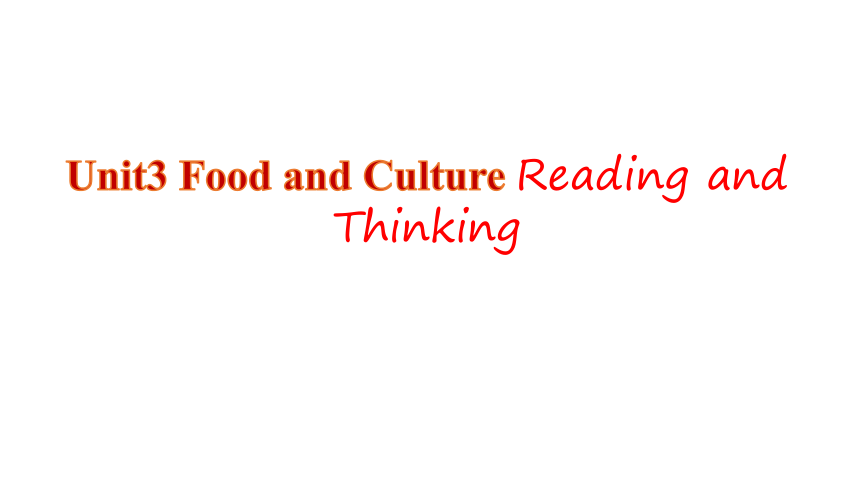(
课件网) Unit3 Food and Culture Reading and Thinking Reading and Thinking Culture and Cuisine Learning objectives In this period, you are expected to: figure out the structure of the passage by reading about the cuisines of different places and their culture; sort out and retell the author’s experiences with different Chinese cuisines; voice your opinions on the link between food and culture. Shandong cuisine Jiangsu cuisine Anhui cuisine Zhejiang cuisine Fujian cuisine Guangndong/Cantonese cuisine Hunan cuisine Sichuan cuisine What are the eight cuisines Lead in 1. How many kinds of cuisines in China 八大 菜系 2. How can these cuisines be described Shandong(鲁菜) Sichuan(川菜) Jiangsu(苏菜) Cantonese(粤菜) Fujian(闽菜) Zhejiang(浙菜) Hunan(湘菜) Anhui(徽菜) (fresh and salty) (hot from chillies and peppercorns) (soft texture(口感), a little sweet) (mild and slightly sweet) (umami(鲜味) taste, light) (fresh flavours, soft texture) (dry hot) (fresh herbs(药草), oily colourful(重色彩)) Why are there so many cuisines Different regions Different weather conditions Different cultures Different histories… Title: Pictures: Main idea:It’s about the _____ between _____and_____. food culture Culture and Cuisine connection Prediction What will be talked about P1 P2 P3 P4 P5 P6 P7 We can divide the text into __ parts 3 Skim the passage and try to summarize the main ideas of each paragraph. You are _____. Chinese food in _____. Chinese food in _____. Chinese food in _____. Chinese food in _____. Chinese food in _____. Culture and cuisine _____. what you eat America Beijing Shandong Xinjiang Guangdong and Henan go hand in hand Read for structures Structure analysis Part 1(para.1) Part 2(para.2-6) Part 3(para.7) The writer’s _____ of different Chinese food in different places. Conclusion: Culture and cuisine _____. what you eat experiences go hand in hand Introduce the topic: You are _____. The French author Jean Anthelme Brillat-Savarin once wrote, “Tell me what you eat, and I will tell you what you are.” Put more simply, this means “You are what you eat.” Most people today relate this saying to healthy eating. However, Brillat-Savarin was referring to our personality, character and culture. Q1.What’s the purpose of the author using the quote in Para1 To introduce the topic. Textual analysis Para 1 Main idea: You are what you eat. Q2. How does the writer understand the saying “You are what you eat.” The food we eat actually reflects our . personality, character and culture Culture Cuisine/ Comment America Para.2 He tasted: _____ General Tso’s chicken Americans love _____flavours, and are not afraid to_____. bold, simple try new things Through the food , he knew that : Prior to coming to China not authentic Culture Cuisine/ Comment China Beijing Para.3 Sichuan peppercorns People offer_____ through food. Through the food , he found that : He tasted: . Later friendship authentic, wonderful and ... ...

